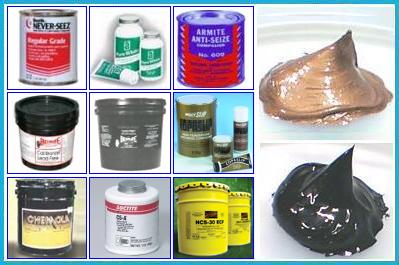Galvanic corrosion involves the electrical interaction of at least two different metals or nonmetallic conductors in an environment that accelerates the corrosion of at least one of them. The common factors are dissimilar metals, electrical contact, and a conductive electrolyte in contact with them. If any of these factors is absent, galvanic corrosion cannot occur.
Galvanic corrosion accelerates the normal corrosion of a metal in an electrolyte. Even without galvanic corrosion, metals may suffer from uniform corrosion, crevice corrosion, pitting, or other forms of corrosion. Galvanic corrosion has an accelerating effect on these other forms of corrosion and, in some cases, causes a form of corrosion to occur that would otherwise not be seen.
Using wrong anti-seize may cause more damage than anyone could think about.
For example, very popular copper or nickel compounds should never be used on aluminum or lead components.
The "safest" is pure graphite grease or non-metallic marine compounds.

 www.smlease.com
www.smlease.com
Galvanic corrosion accelerates the normal corrosion of a metal in an electrolyte. Even without galvanic corrosion, metals may suffer from uniform corrosion, crevice corrosion, pitting, or other forms of corrosion. Galvanic corrosion has an accelerating effect on these other forms of corrosion and, in some cases, causes a form of corrosion to occur that would otherwise not be seen.
Using wrong anti-seize may cause more damage than anyone could think about.
For example, very popular copper or nickel compounds should never be used on aluminum or lead components.
The "safest" is pure graphite grease or non-metallic marine compounds.

What is Galvanic Corrosion: Galvanic Corrosion Chart -
Galvanic or dissimilar metal corrosion is electrochemical corrosion that occurs when one metal comes in contact with another material.
 www.smlease.com
www.smlease.com





